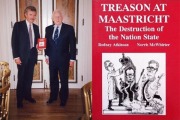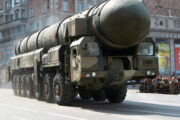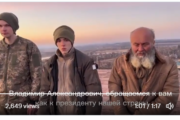African Cities could be targets
Dateline 23rd March 2005
Article from german-foreign-policy.com translated by Edward Spalton
BERLIN/FALLUJA/ABIDJAN (own report). The German Bundeswehr (Armed Forces) should increase its capability of fighting in towns “to increase Germany’s weight in military and security policy”. This is recommended in a “Discussion Paper” by the Berlin Foundation for Science and Policy (SWP). According to the concept, the scenes of future wars will, ever increasingly, be in towns.
The US attack on Falluja in November 2004 was given as an example. Around 6,000 people
lost their lives. According to the paper, capital cities of African countries are possible targets for similar EU operations. Urban warfare by Western high-tech units (Military Operations in Urban Terrain – MOUT) are designed to destroy local resistance groups and must therefore automatically be directed against the inhabitants of whole streets, districts and conurbations.
CORE CAPABILITY
The scenario for war which is designated a “Discussion Paper”(*1) (under the title “Urban Warfare as the dominant Core Capability of the Future”) is based on the operations of US forces, which are taken as a model for German target planning. According to the paper, 80% of US operations in the last twenty years were directed against towns. Roughly 40% of operations took place in exclusively urban areas. The semi official German foundation concludes that “the significance of the urban area” with its “factors of influence” and “strong points of power will increase further”. The Bundeswehr should aim for “strengthened operational capability in this increasingly significant area of conflict”.
GERMANY’S IMPERIAL WEIGHT
The paper states that investment in training facilities and armaments for the widely anticipated fighting in towns could “increase Germany’s military and political weight in matters of security policy”. Military competition in offensive capability, based on Washington’s Iraq fiasco, is not impossible. The US Army in Falluja suffered heavy casulaties (“at least 64 soldiers”), needed time to bring up “adapted armaments and vhicles” as well as requiring “adaptations to organisation and tactical methods”. Against this background, Berlin is now taking the opportunity “to give the Bundeswehr a leading role in MOUT”.
HIGH YIELD AMMUNITION
These leadership ambitions can rely on new developments by German arms manufacturers. Rheinmetall and Kraus Maffei Wegman announce further extensions to their product range which will include the new Armoured Personnel Carrier (APC) PUMA from 2006. The vehicle is classed as extremely transportable and adaptable. It is among “the most modern in international competition”(*2). As the manufacturers say, the new APC is designed for use
against “a materially and technically inferior enemy who is operating in existing structures and built-up areas (Urban Warfare MOUT)”.
On account of planned foreign operations, the PUMA concept is an air transportable/modular, armoured and well-armed German APC development. “The MK 30-2 Machine Cannon from Rheinmetall Waffe Munition GmbH with air-burst high yield ammunition guarantees that the APC can fight without the need for intervisibility in built-up areas”.
FIGHTING IN BATTLE GROUPS
To prepare itself for active operations against resistance in built-up areas, the Bundeswehr is making use of the experience of the Israeli Army. In May last year, 15 soldiers were sent to Israel to be inducted into the tactics of urban warfare(*3). The Israeli Army had “gained far-ranging experience of operations in urban areas” and in actual war experience was
supported by “very close cooperation between the secret service and military intelligence” – thus the SWP reported the armed repression of Palestinian groups.
“Military versions of special computer programs” (so-called High Tech games like “Counter Strike”) were recommended as useful for learning basic tactics, as they give a virtual scenario for “an improved basic understanding of fighting with Battle Groups in complex urban areas”
AFRICAN CAPITALS
The “Discussion Paper” tasked the Bundeswehr with inner city fighting which may arise within the framework of the NATO Response Force or EU Battle Groups (*4). The Battle Groups should be “in the first line, fitted out for operations in Africa”. The African “sphere of influence” of the street-fighting units would be “primarily in capital cities”, says the author, “near to the political and economic representatives of foreign powers and also to the most important air ports and harbours”.
The paper cites normal operational measures taken by earlier colonial powers during military expeditions, which are notorious throughout Asia, Africa and Latin America. The announcement of the return of world-wide targeted actions against numerous poor countries demonstrates the advancing militarisation of German foreign policy which is again preparing for further military takeover of parts of the Third World.
1. Falluscha und die Transformation der Streitkraefte. Haeuserkampf in
Staedten als dominante Kernfaehigkeit der Zukunft? Diskussionspapier der
SWP-Forschugsgruppe Sicherheitspolitik. Berlin Januar 2005
2. Starke Bewaffnung fuer den Schuetzenpanzer Puma;
www.rheinmetall-detec.de/index php?
3. Erfahrungsbericht;
www.bundeswehr.de/C1256EF4002AED30/CurrentBaseLink/W269NJM595INFODE
4.s.dazu Grenzloser Krieg und Operationszentrum















